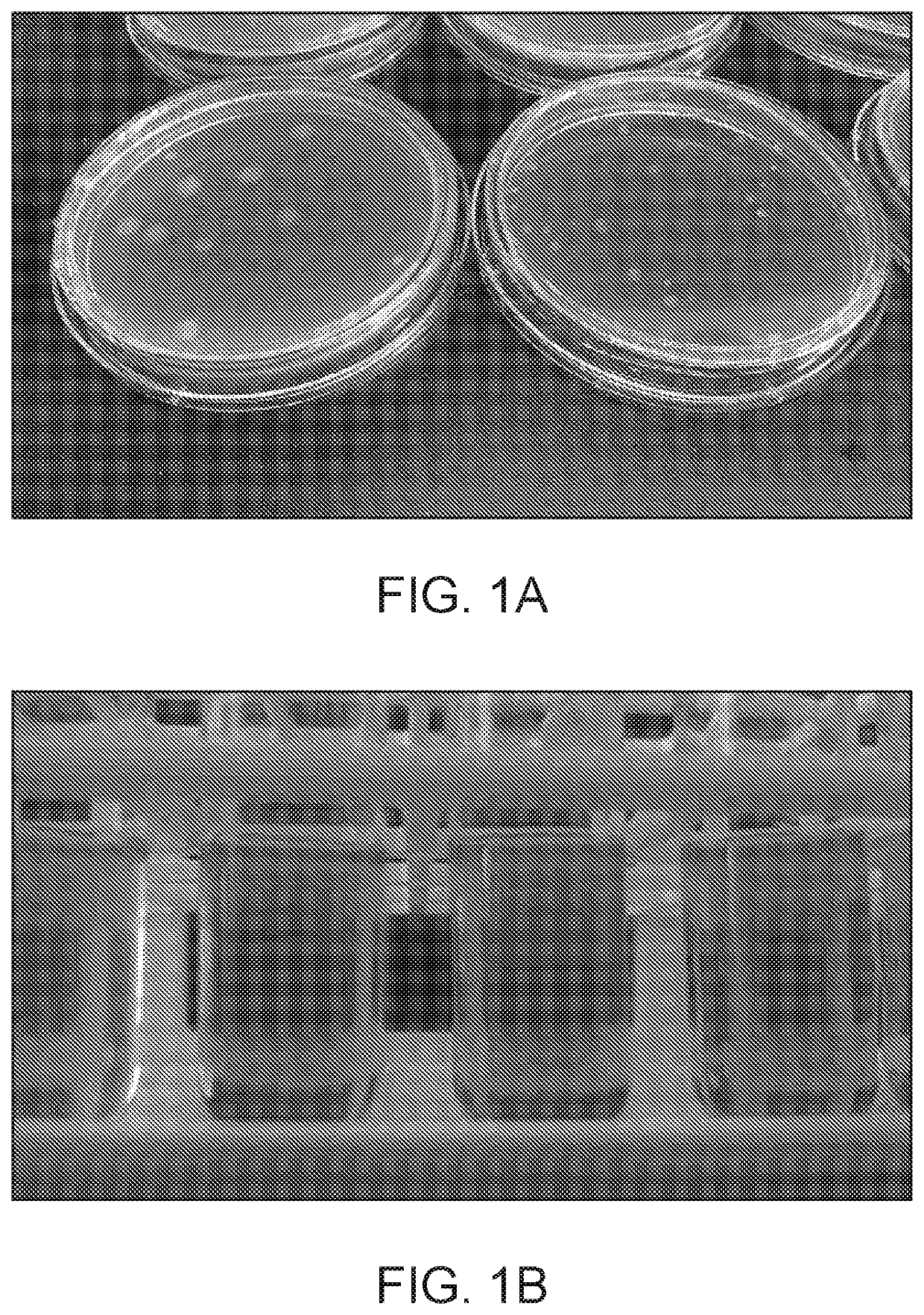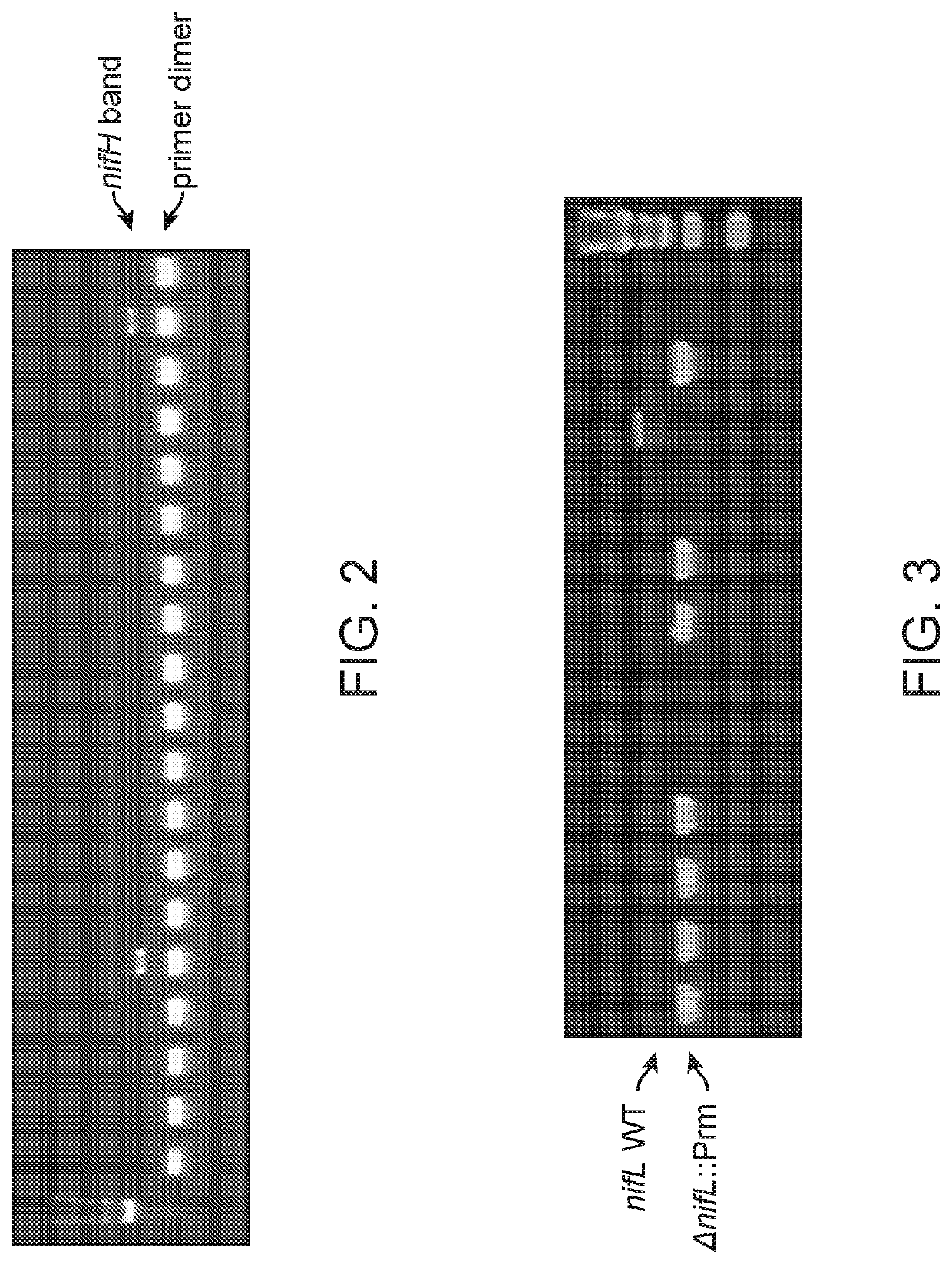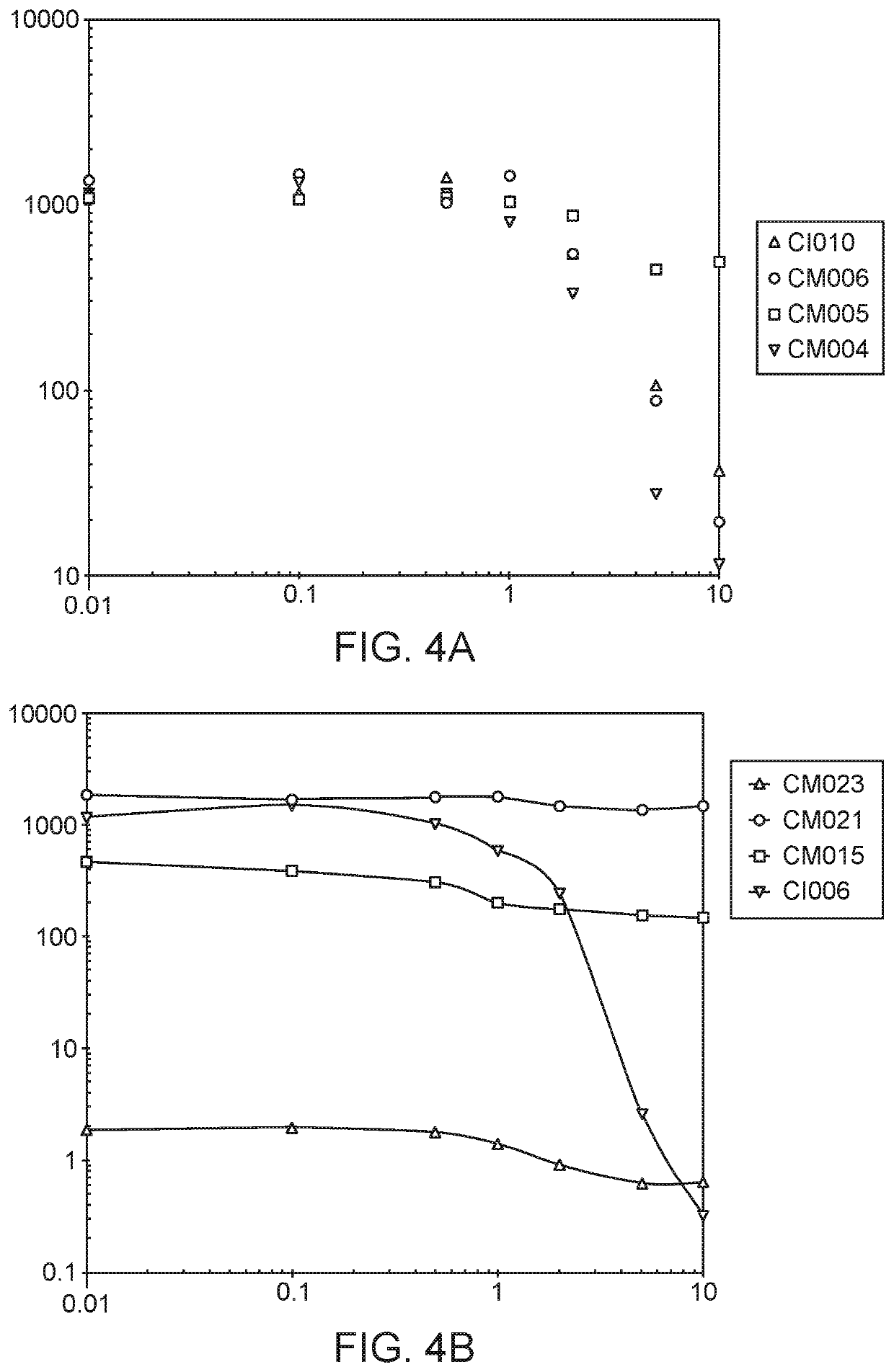Gene targets for nitrogen fixation targeting for improving plant traits
- Summary
- Abstract
- Description
- Claims
- Application Information
AI Technical Summary
Benefits of technology
Problems solved by technology
Method used
Image
Examples
example 1
of Microbes from Plant Tissue
[0267]Topsoil was obtained from various agricultural areas in central California. Twenty soils with diverse texture characteristics were collected, including heavy clay, peaty clay loam, silty clay, and sandy loam. Seeds of various field corn, sweet corn, heritage corn and tomato were planted into each soil, as shown in Table 1.
TABLE 1Crop Type and Varieties planted into soil with diverse characteristicsCrop TypeField CornSweet CornHeritage CornTomatoVarietiesMo17Ferry-MorseVictory SeedsFerry-Morse Roma‘Golden Cross‘Moseby Prolific’VFBantam T-51’B73Ferry-Morse ‘SilverVictory Seeds ‘Reid'sStover RomaQueen Hybrid’Yellow Dent’DKC 66-40Ferry-Morse ‘SugarVictory SeedsTotally TomatoesDots’‘Hickory King’‘Micro Tom Hybrid’DKC 67-07Heinz 1015DKC 70-01Heinz 2401Heinz 3402Heinz 5508Heinz 5608Heinz 8504
[0268]Plants were uprooted after 2-4 weeks of growth and excess soil on root surfaces was removed with deionized water. Following soil removal, plants were surface st...
example 2
ization of Isolated Microbes
Sequencing, Analysis and Phylogenetic Characterization
[0271]Sequencing of 16S rDNA with the 515f-806r primer set was used to generate preliminary phylogenetic identities for isolated and candidate microbes (see e.g. Vernon et al.; BMC Microbiol. 2002 Dec. 23; 2:39.). The microbes comprise diverse genera including: Enterobacter, Burkholderia, Klebsiella, Bradyrhizobium, Rahnella, Xanthomonas, Raoultella, Pantoea, Pseudomonas, Brevundimonas, Agrobacterium, and Paenibacillus, as shown in Table 2.
TABLE 2Diversity of microbes isolated from tomato plantsas determined by deep 16S rDNA sequencing.GenusIsolatesAchromobacter7Agrobacterium117Agromyces1Alicyctobacillus1Asticcacaulis6Bacillus131Bradyrhizobium2Brevibacillus2Burkholderia2Caulobacter17Chryseobacterium42Comamonas1Dyadobacter2Flavobacterium46Halomonas3Leptothrix3Lysobacter2Neisseria13Paenibacillus1Paenisporosarcina3Pantoea14Pedobacter16Pimelobacter2Pseudomonas212Rhizobium4Rhodoferax1Sphingobacterium13Sphin...
example 3
is of Candidate Microbes
Lambda-Red Mediated Knockouts
[0275]Several mutants of candidate microbes were generated using the plasmid pKD46 or a derivative containing a kanamycin resistance marker (Datsenko et al. 2000; PNAS 97(12): 6640-6645). Knockout cassettes were designed with 250 bp homology flanking the target gene and generated via overlap extension PCR. Candidate microbes were transformed with pKD46, cultured in the presence of arabinose to induce Lambda-Red machinery expression, prepped for electroporation, and transformed with the knockout cassettes to produce candidate mutant strains. Four candidate microbes and one laboratory strain, Klebsiella oxytoca M5A1, were used to generate thirteen candidate mutants of the nitrogen fixation regulatory genes nifL, glnB, and amtB, as shown in Table 4.
TABLE 4List of single knockout mutants created through Lambda-redmutagenesis Oligo-Directed Mutagenesis with Cas9 SelectionStrainnifLglnBamtBM5A1XXXCI006XXXCI010XXXCI019XXCI028XX
[0276]Olig...
PUM
| Property | Measurement | Unit |
|---|---|---|
| Fraction | aaaaa | aaaaa |
Abstract
Description
Claims
Application Information
 Login to View More
Login to View More - Generate Ideas
- Intellectual Property
- Life Sciences
- Materials
- Tech Scout
- Unparalleled Data Quality
- Higher Quality Content
- 60% Fewer Hallucinations
Browse by: Latest US Patents, China's latest patents, Technical Efficacy Thesaurus, Application Domain, Technology Topic, Popular Technical Reports.
© 2025 PatSnap. All rights reserved.Legal|Privacy policy|Modern Slavery Act Transparency Statement|Sitemap|About US| Contact US: help@patsnap.com



